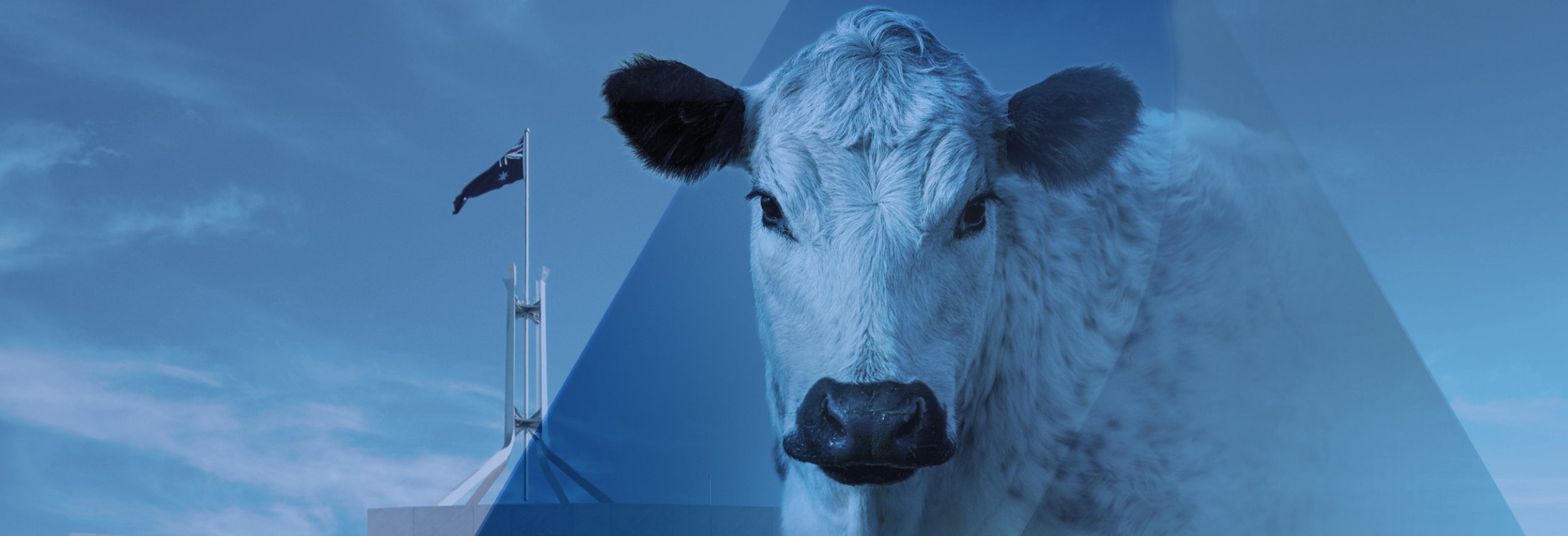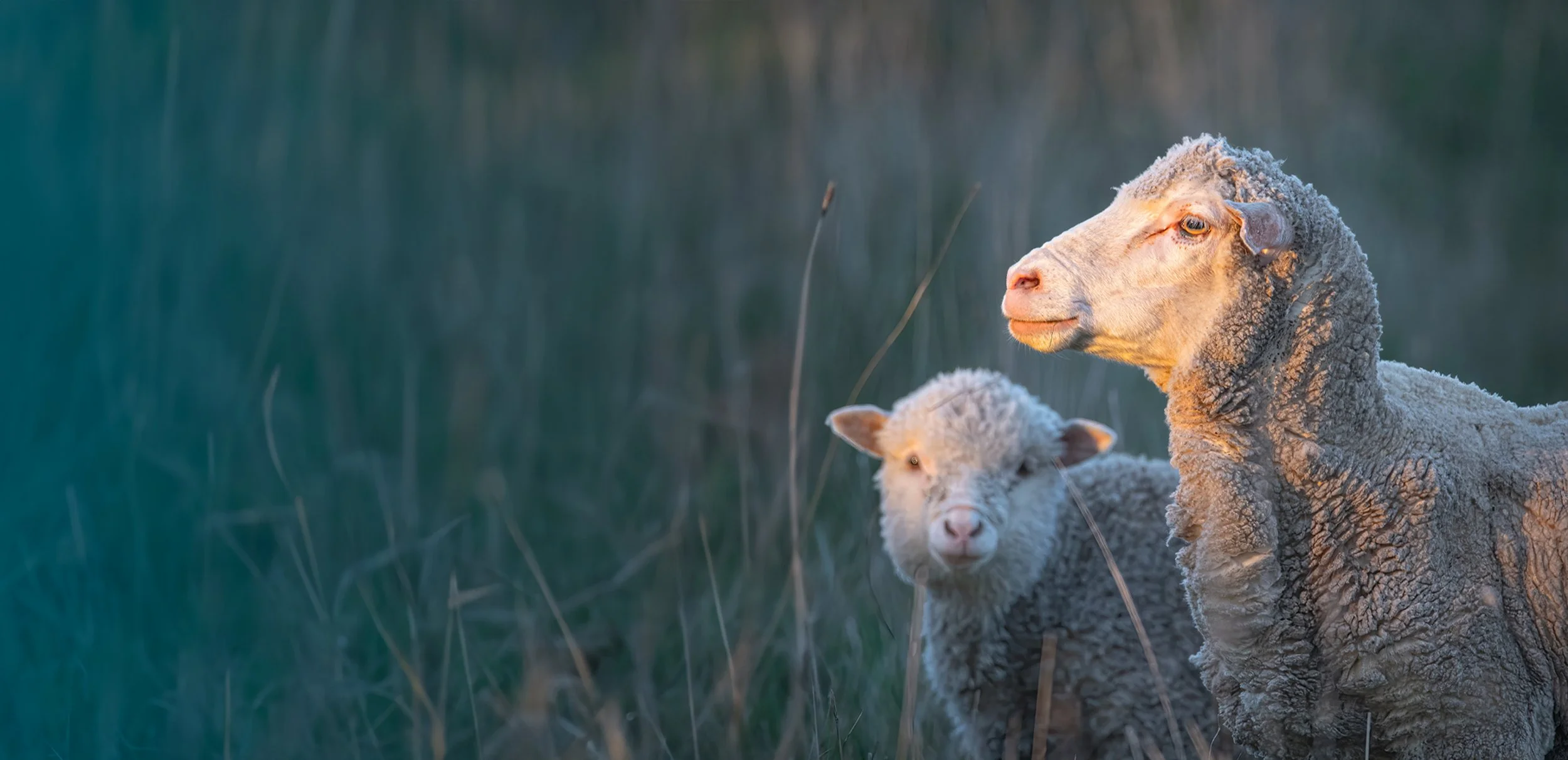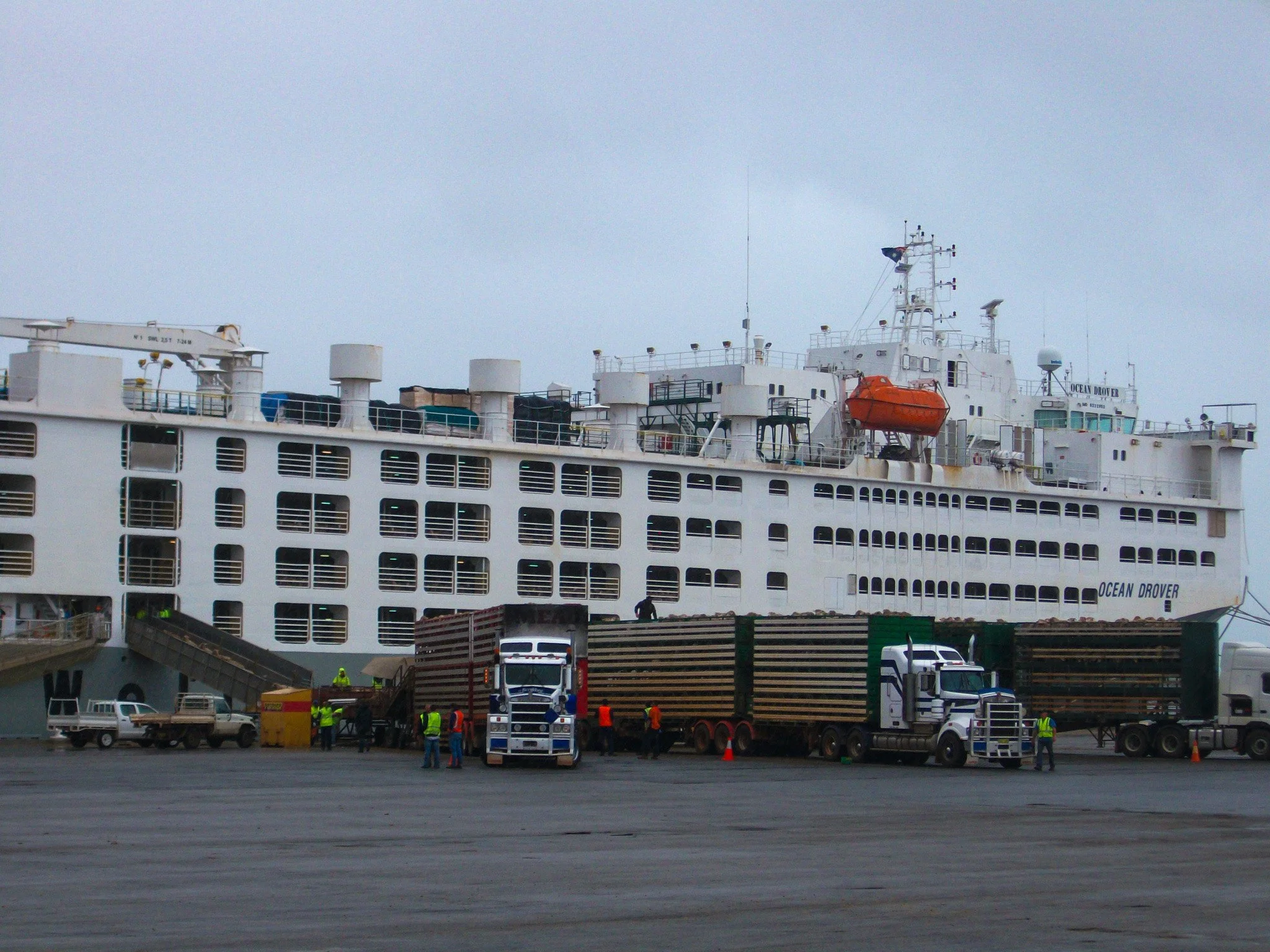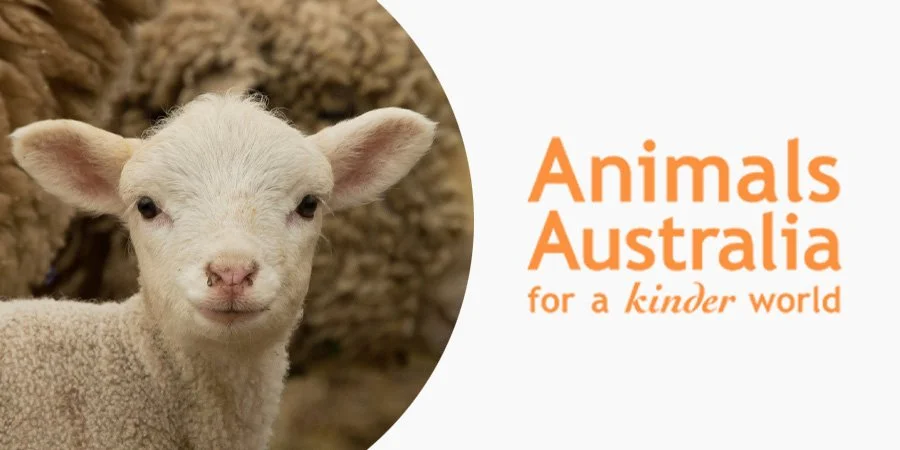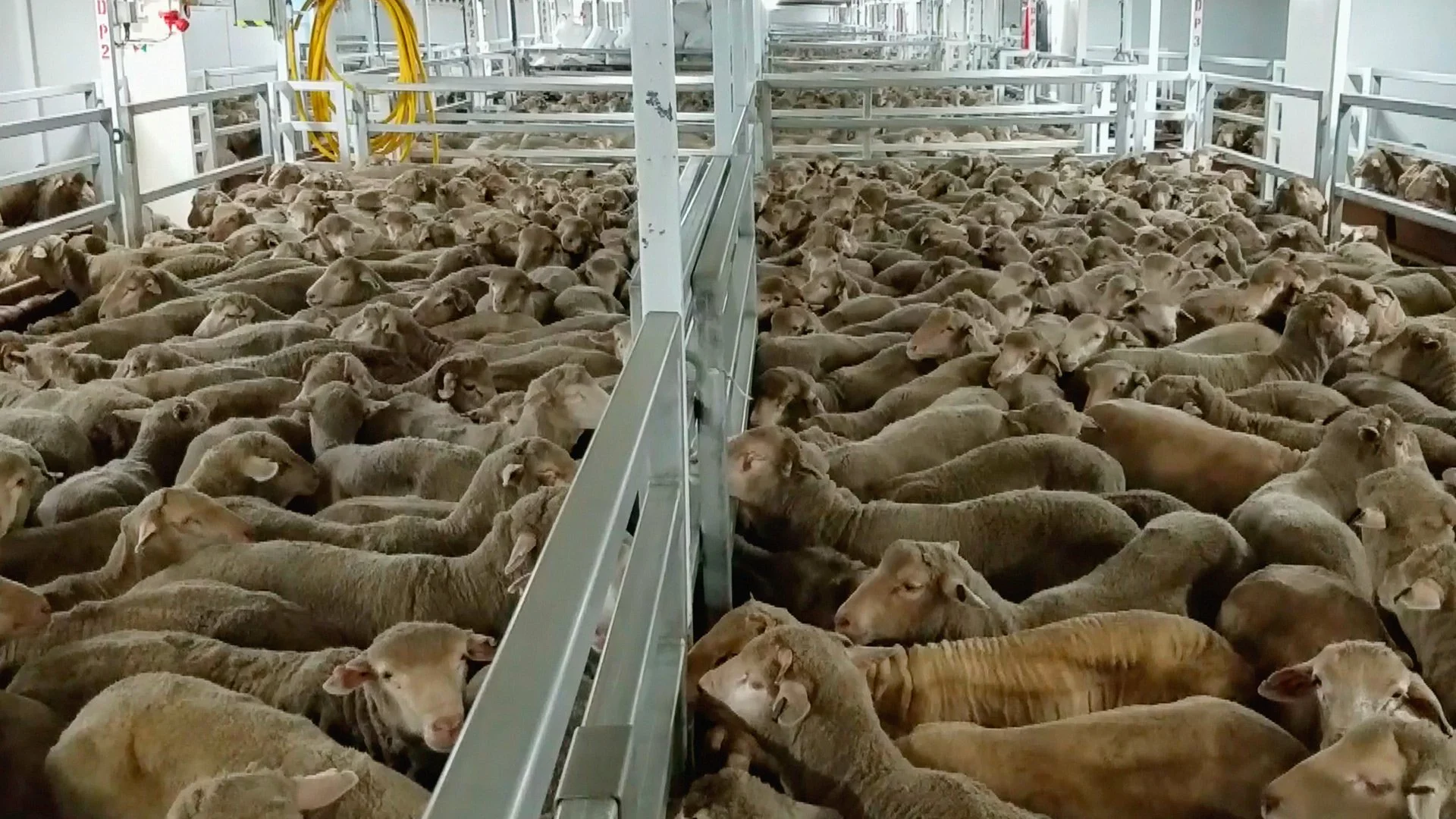The end of live sheep exports by sea
The Australian Parliament has passed legislation to end live sheep exports by sea by 1 May 2028. Legislating an end date for live sheep exports in this term of parliament was a key ambition for the Alliance for Animals. The trade illustrates the failures of our current animal welfare governance system and underscores the urgent need for systemic change to protect animals.
The Alliance for Animals has been instrumental in uniting key organisations and experts to advocate for the end of live sheep exports. Through strategic partnerships, leveraging media, and sustained political advocacy, we successfully secured the government’s commitment to phase out this inhumane trade and helped achieve this historic legislative change.
Secured an election commitment from the Labor Government
In the lead-up to the 2022 Federal Election, the Alliance engaged with major political parties, asking for their position on four key reform issues, including the phase out of live sheep export. Here, we secured the Australian Labor Party’s promise to phase out live sheep exports if elected.
“Labor… will phase out live sheep exports in consultation with the industry and the West Australian Government...”
Coordinating a strategic alliance
In 2022, we formed the End Live Sheep Export (ELSE) alliance, uniting 16 leading animal protection groups to amplify our impact. This coalition has been pivotal in holding the government accountable to their election promise to phase out live sheep exports.
We actively engage in policy discussions, meet regularly with politicians, government advisors, and officials to advocate for evidence-based solutions to end the trade, and utilise media to increase public pressure. Our combined efforts ensure that the plight of exported sheep remains a key public and political focus.
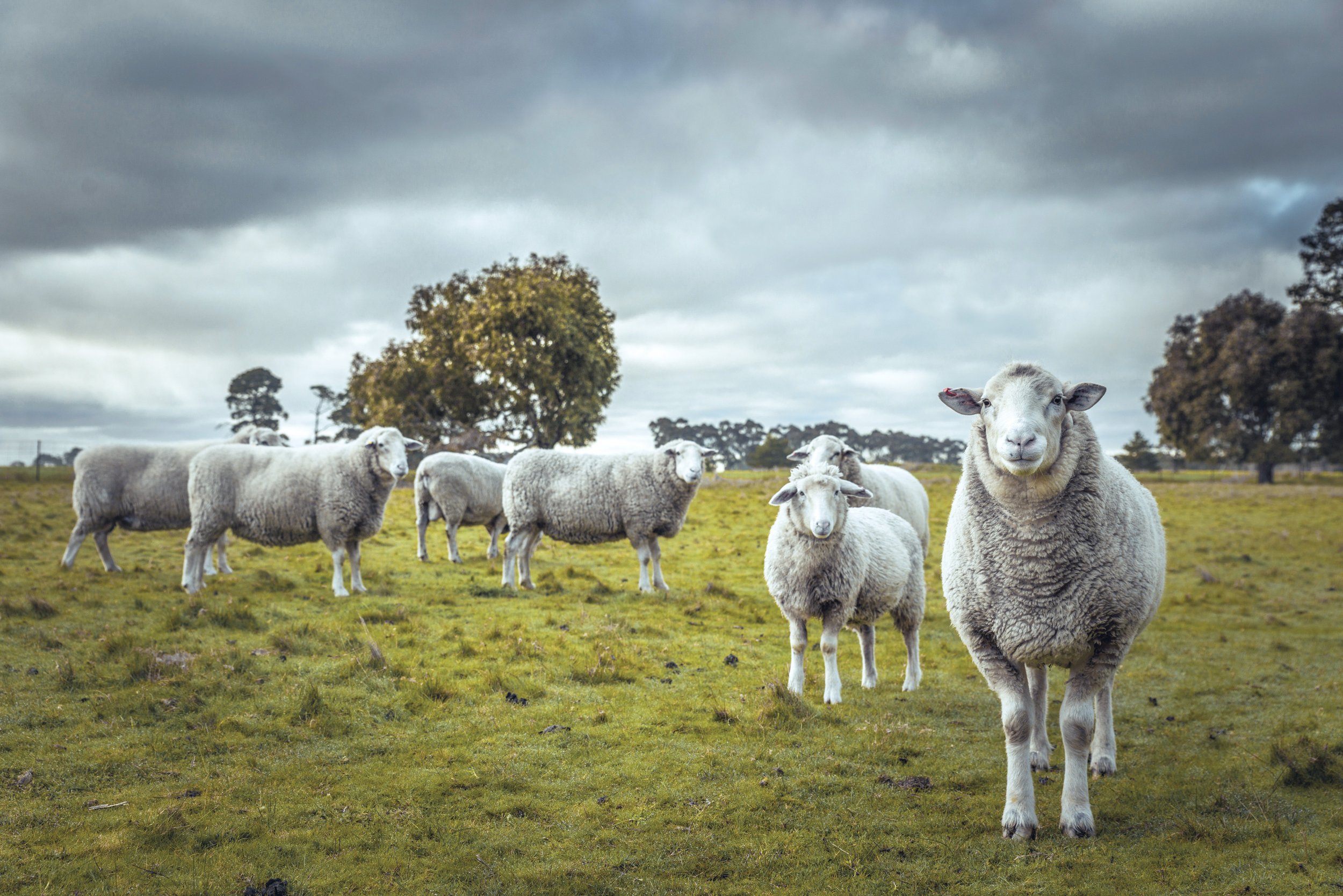
The end of live sheep export by sea is coming
After decades of tireless campaigning by compassionate individuals and organisations, the Australian Government has finally passed legislation to phase-out the cruel trade by the 1st of May 2028.
This is a historic moment in animal welfare and a reflection of the importance of persistent advocacy and lobbying. The Alliance did call for a shorter phase-out period. and we will continue to keep the pressure on government to ensure that the transition package is rapidly implemented and the industry is under scrutiny until the last voyage ends.
What are the next steps?
The Alliance will continue to meet with politicians to ensure interim measures are implemented to guarantee export numbers decline throughout the phase out. Together with our core member organisations and allies, we will stay committed to monitoring the industry until the very last voyage. But we know that we cannot do this alone. Passionate supporters like you remain vital.
How you can help Australian sheep.
Thank your state senators for voting to end live sheep export.
Decision-makers who voted in favour of ending the live sheep trade weathered an aggressive campaign by the live export lobby to ensure that the welfare of animals – and societal expectations for their treatment – was prioritised. Thanks to them, the Bill to end live sheep exports by sea passed. We think that deserves some appreciation and encouragement!
Organised by Animals Australia
Thank your Federal MP for voting to end live sheep export.
Decision-makers who voted in favour of ending the live sheep trade weathered an aggressive campaign by the live export lobby to ensure that the welfare of animals – and societal expectations for their treatment – was prioritised. Thanks to them, the Bill to end live sheep exports by sea passed. We think that deserves some appreciation and encouragement!
Organised by Animals Australia
FAQs about Live Sheep Export
-
Long, stressful journeys, poor welfare, and a lack of standards overseas
Sheep who are exported on live export vessels are subject to gruelling conditions both on board and upon arrival in importing countries. During transport, sheep endure cramped conditions, poor airflow, and unsanitary environments, leading to heat stress, failure to access food and water, injury, and disease. The industry has an expected mortality rate of 1%.
Once they arrive, the animals’ situation deteriorates further. Despite regulatory measures like the Exporter Supply Chain Assurance System (ESCAS), investigations reveal sheep suffering in extremely hot temperatures, without shade and little access to food and water, before being brutally killed in slaughter facilities with no prior stunning.
-
Yes, Australia exports around 600,000 live sheep by sea around 600,000 live sheep by sea each year from Western Australia to the Middle East on voyages that take over 3 weeks. Kuwait is the largest importer of live sheep, followed by Israel, Jordan, the United Arab Emirates, Oman and Qatar. In 2023, live sheep exports resumed to Saudi Arabia after many years. Recent hostilities in the Red Sea have led to some journeys being re-routed around southern Africa, further extending the time spent at sea.
Update: The government has legislated an end date for this cruel trade, 1 May 2028.
-
Ending live sheep export and transitioning to chilled and frozen meat trade will still require sheep producers, stockpersons, stock transport drivers, shearers, vets, and truck drivers. Contrary to claims of economic detriment and job loss, ending live exports has the potential to benefit the economy. An Australian Government report found that processing sheep domestically could boost employment in Western Australia, by creating more jobs in local abattoirs. In the phase out transition plan, the Government has awarded $107 million over 5 years to support the industry and workers.
Learn more about the benefits of phasing out live sheep export here.
-
The live sheep export trade has been in long-term structural decline, accounting for just 0.1% of Australia’s agricultural exports. Sea export numbers dropped to 570,000 last year from over 6 million sheep in 2002.
In comparison, the chilled and frozen meat trade is worth $4.5 billion – 58 times the value of the live sheep export trade, showing that it is an economically beneficial alternative. Further, the export of chilled lamb to the Middle East increased by 187% between 2009 and 2019.
-
Transitioning to chilled and frozen meat trades is an economically beneficial alternative to live exports. This shift not only prevents animal suffering from sea transportation, but also supports job creation within Australia, improving the economy. The chilled meat trade is an established viable alternative, with strong growth over the past decade. In fact, export of chilled lamb to the Middle East increased by 187% between 2009-2019.
Image: Animals Australia
Related resources
Explore our collection of articles, media releases, and the comprehensive submissions we've made to advocate for the end of live sheep export. Each resource underscores the critical need for reform and the powerful role your support plays.
Find out more about the live sheep export trade from our core member organisations
